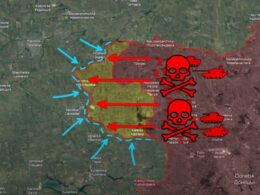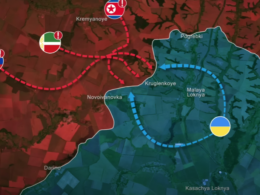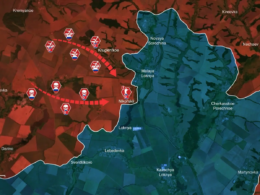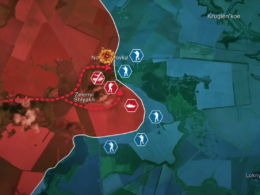Day 1021
On 10 December, there are a lot of interesting updates from the Kursk direction. Here, the Russian offensive has faltered disastrously, leaving their forces struggling to hold ground as Ukrainian troops continue to gain momentum amid growing unrest. Civilians in Kursk caught in the crossfire have intensified their protests, forcing Putin to fire the governor of Kursk in a dramatic response to these mountain failures.
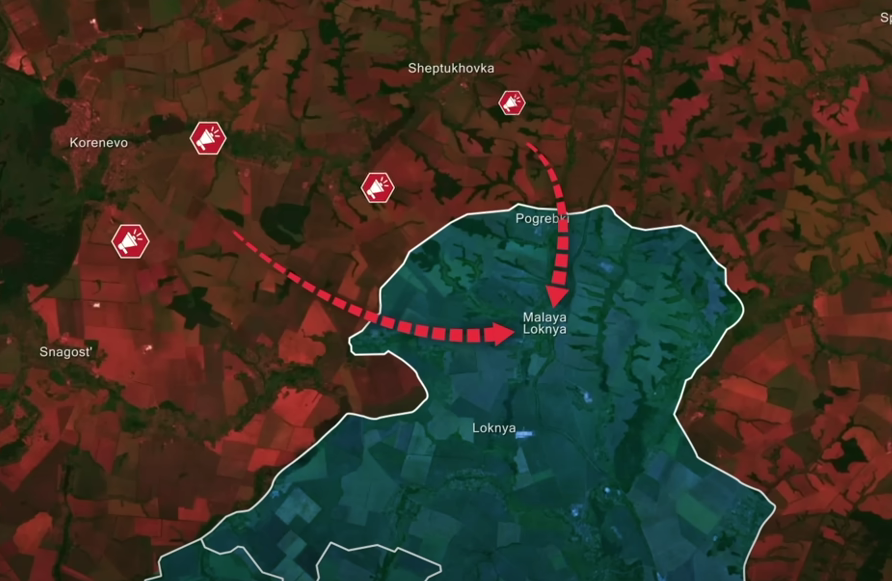
The third wave of the Russian counter-offensive in Kursk aimed to execute a pincer maneuver towards Malaya Loknya from two axes, intending to cut off many Ukrainian soldiers in the northern part of the Kursk salient. Russian forces sought to replicate their initial success from Korenevo by using mechanized assault units to penetrate into the Ukrainian rear rapidly. However, after nearly two months of daily assaults, their offensive failed to make any further significant territorial gains, and the efforts to capture Malaya Loknya ultimately collapsed.
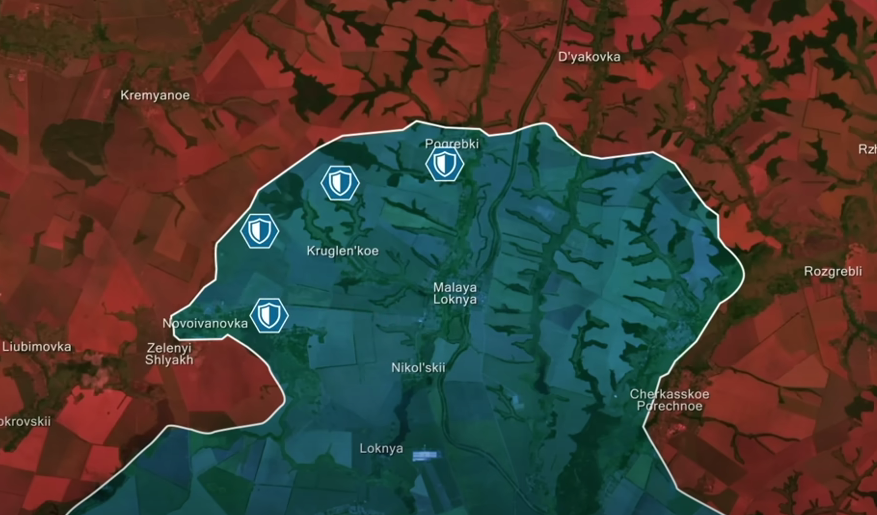
Russian tactics involved deploying large mechanized assault groups that used the full speed of their vehicles along paved roads to bypass Ukrainian front lines and quickly reach rear positions, dismounting to attack from unexpected angles. These tactics had previously succeeded, allowing Russia to capture Zenenyi Shlyakh and collapse Ukrainian defenses to its North. However, the repetitive nature of these counterattacks since August allowed Ukrainian forces to analyze and predict Russian strategies. This insight enabled them to adapt and prepare for the third wave of counterattacks, significantly reducing their effectiveness.
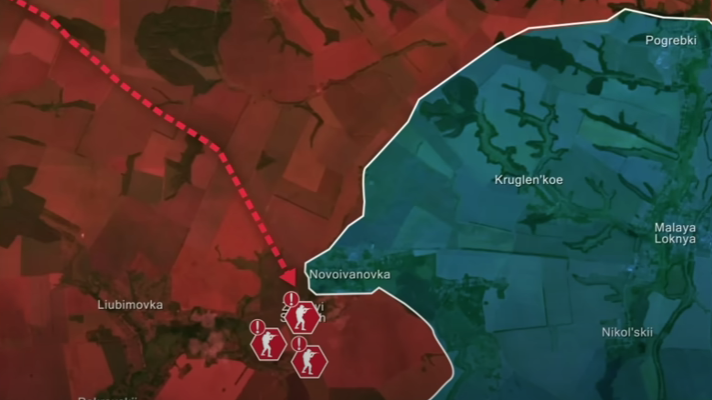
Ukrainian forces correctly anticipated Malaya Loknya as the next target of the Russian offensive, allowing them to fortify the area and heavily mine the roads, which effectively eliminated countless Russian mechanized assaults over the past month. Unlike the terrain near Korenevo, the roads to Malaya Loknya are flanked by elevated positions near Novoivanivka and Pogrebki, giving Ukrainians a crucial advantage in detecting and targeting Russian units with artillery. Drones provided continuous surveillance for rapid responses. This layered defense allowed Ukrainian tanks to intercept Russian columns, neutralizing mechanized units and halting the offensive.
Repeated waves of Russian attacks yielded only minor territorial gains near Novoivanka, where small groups of Russian soldiers briefly held positions. However, these gains came at a steep cost, as heavy losses in troops and equipment severely depleted Russian offensive capabilities, creating opportunities for Ukrainian counterattacks.
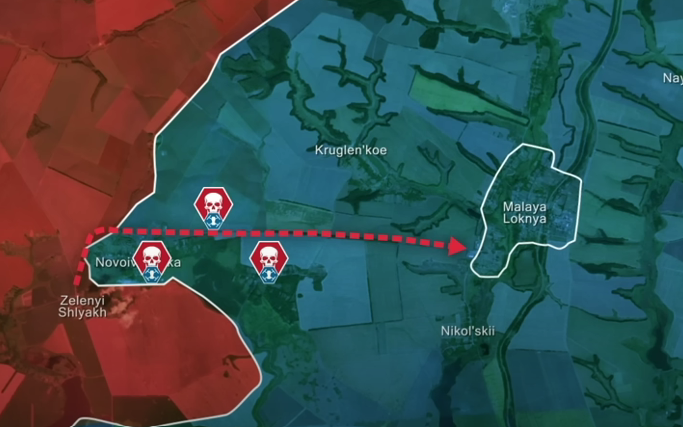
Combat footage from the area shows a Ukrainian Bradley infantry fighting vehicle using its 25mm autocannon to suppress Russian positions. The suppression allowed Ukrainian troops to dismount and effectively overrun the Russian-held positions, ultimately reclaiming control of Novoivanka.
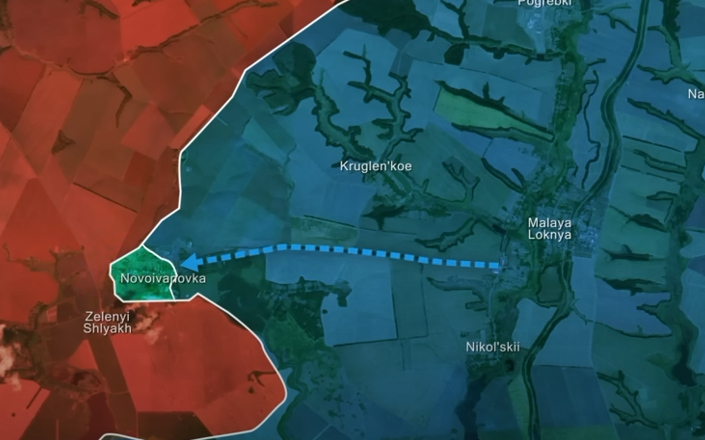
As the Russian offensive slowed and devolved into slow, grinding battles that left most villages in the area destroyed, widespread social discontent increased amongst Russian civilians, particularly refugees from the conflict zones. The fighting displaced nearly 150,000 people or almost 10% of the Kursk Region's population. Many of these refugees expressed frustration with the Russian civilian and military administration's failure to provide adequate housing and support. At the same time, they were displaced, as their homes and belongings were left behind and actively destroyed by the ongoing battle.
Putin recognized that growing social discontent among the refugee population could spread if the situation, particularly regarding the offensive and housing issues, weren't considered stabilizing. To address this, he dismissed Kursk Governor Alexis Smirnov, blaming him for Russia's failure to respond effectively to the Ukrainian incursion and its aftermath.
The dismissal was delayed for months as the Russian government downplayed the impact of the Ukrainian offensive. However, the continued failure to eliminate the Kursk salient eventually forced the political leadership to acknowledge the severity of the situation and remove him from office.
Overall, as the Russians failed to adapt their tactics from their initial assaults, Ukrainians were able to organize a strong defense and effectively countered the Russian approach. This led to the Russian offensive stalling and falling short of its objectives, forcing the Russian government to take more drastic measures, including replacing the governor of Kursk.
Smirnov's dismissal is intended as a short-term solution to alleviate social discontent. However, the underlying issues caused by the Ukrainian incursion in Kursk, along with ongoing civilian struggles, persist. Continued Russian failure in the Kursk Oblast is likely to exacerbate these problems further, escalating social unrest.
In our daily frontline report, we pair up with the military blogger Reporting from Ukraine to keep you informed about what is happening on the battlefield in the Russo-Ukrainian war.
Read also:
- Frontline report: Ukrainians lure, ambush Russian armor group in Kursk using seized communications

